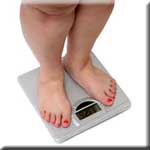When was the last time you really took a close look at the nutrition label on many of the processed food items you regularly eat? If your diet consists mostly of products that come in a can, jar, foil-wrap or cardboard container, they have likely been ultra-processed by one of the food manufacturing giants.
Processed foods make up the majority of calories eaten by Americans every day, and are largely void of the essential nutrients our body uses to properly metabolize calories and regulate fat storage. Research demonstrates the importance of controlling our diet to ensure proper nutrition and avoid dangerous chemical additives that slow weight loss and promote chronic disease.
Ultra-Processed Foods are Developed in a Food Laboratory
Food manufacturers know that their food must appeal to your evolved sense of taste for sweet, salt and fat. We crave these tastes so we will want to eat natural foods that are packed with vitamins, minerals and essential nutrients that help prevent disease. Instead, laboratory foods are infused with sugar and hydrogenated fats that tease our taste buds and provide us with little more than empty calories that boost blood sugar, cause weight gain and initiate chronic illnesses including cancer, heart disease and diabetes.
Increase in Processed Food Consumption Directly Related to Weight Gain and Chronic Illness
The results of a study published in the Journal of the World Public Health Nutrition Association found that Americans spend 90% of their food budget on processed foods. A direct correlation was made between the calories eaten in the form of processed foods, weight gain and disease. The lead author of this study concluded, "the rapid rise in consumption of ultra-processed food and drink products, especially since the 1980's, is the main dietary cause of the concurrent rapid rise in obesity and related diseases throughout the world."
Processed Foods are Calorie Dense and Nutrient Poor
The main problem with ultra-processed foods is they deprive your body of the essential nutrients required to maintain optimal health and alter metabolism toward overweight and obesity. A steady diet of laboratory manufactured foods typically consists of twice the daily calories required to maintain an ideal weight and less than one-quarter of the critical nutrients we need to preserve health and avoid illness. While processed foods satisfy our taste for a variety of different flavors, over the course of decades they lead to a nutrient deficient state that is a medium for disease development and weight gain.
Controlling Processed Food Consumption
Processed foods have become so much a part of our daily diet that it would be impossible for most people to eliminate this source of calories from their diet. The key is to include more raw foods in their natural form into your diet and minimize consumption of processed items. Include at least one serving of vegetables, leafy greens or fruit with each meal, and cut the amount of processed foods you eat. Slowly introduce additional sources of raw foods as you work toward making processed foods nothing more than an occasional treat.
Processed foods have been manipulated and heated to destroy or neutralize any healthy nutrients that may have originally been present in the raw product. A diet void of these nutrients leads to metabolic dysfunction, chronic illness and weight gain. Make a conscious effort to cut processed food consumption to live a longer, disease-free life.






































